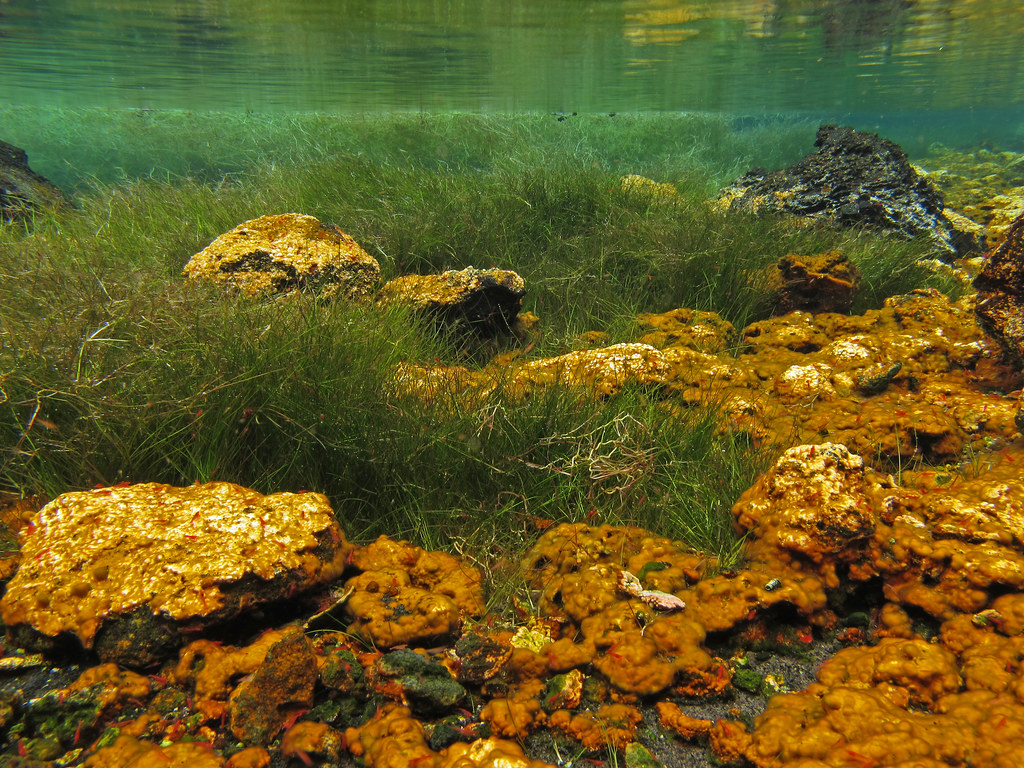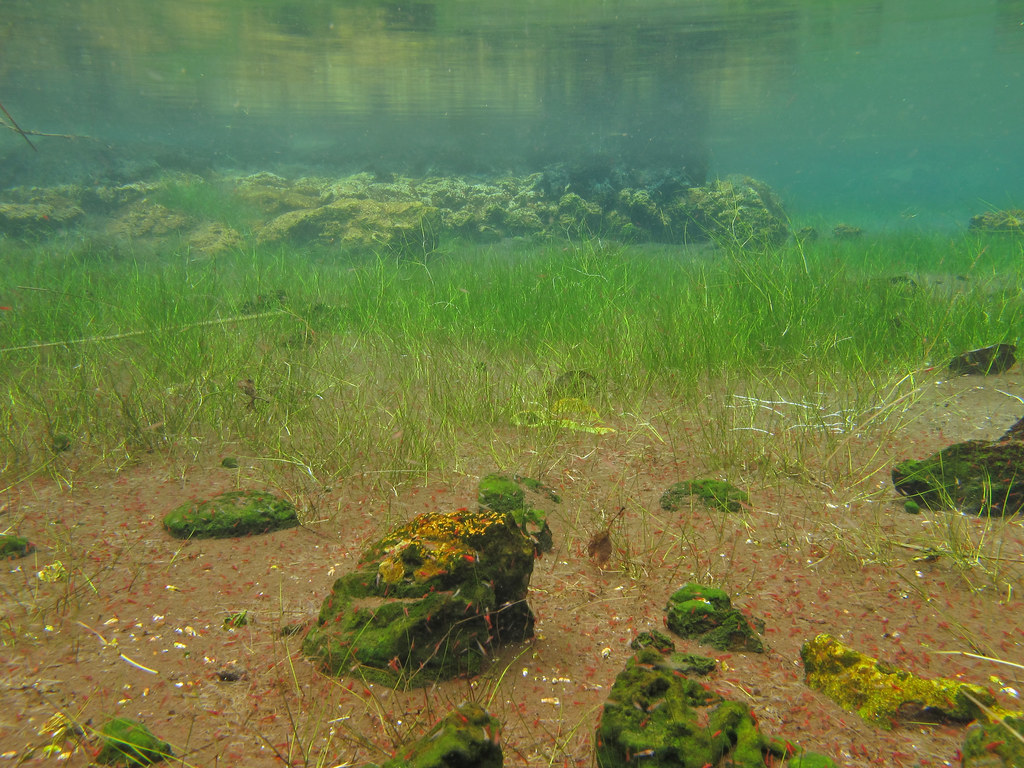Plants found in or at anchialine pools with opae ula include Ruppia maritima (widgeon grass). Has anyone tried growing it in an opae ula tank?
I hope this isn't a tedious question. I'm new to the board (hi!) and new to shrimp aquaria. My background is in botany.
...but, brackish water plants do exist in anchialine pools
Moderator: Mustafa
Re: ...but, brackish water plants do exist in anchialine pools
You might want to look into what sediment depth is required for the root system.
- JasonG3333
- Larva

- Posts: 41
- Joined: Tue Dec 24, 2013 1:50 pm
- Location: San Diego, CA
- Contact:
Re: ...but, brackish water plants do exist in anchialine pools
As a botanist curious about brackish plant alternatives and options, you may find interest in this thread...
viewtopic.php?f=16&t=5360
viewtopic.php?f=16&t=5360
Re: ...but, brackish water plants do exist in anchialine pools
Thank you, Jason. That's very interesting.
Yes, the widgeon grass is found in the anchialine pools where sediment has accumulated. I don't mind putting a lot of sand and lava gravel and maybe a little kaolin down in the tank bottom unless that would somehow mess something up -- host too much bacteria and algae inaccessible to the shrimp, maybe? Would that do any harm you can think of?
Yes, the widgeon grass is found in the anchialine pools where sediment has accumulated. I don't mind putting a lot of sand and lava gravel and maybe a little kaolin down in the tank bottom unless that would somehow mess something up -- host too much bacteria and algae inaccessible to the shrimp, maybe? Would that do any harm you can think of?
Re: ...but, brackish water plants do exist in anchialine pools
The alga in the referenced thread appears to a species of Batophora. I’ve seen it in hypersaline pools in the Bahamas, but don’t know how well it grows in estuarine waters.
Re: ...but, brackish water plants do exist in anchialine pools
Reading today I learned that some kinds of Batophora are despised pests in reef aquariums. B. oerestedii is found in some brackish environments including a sinkhole with salinities ranging from 18 to 55 PPT in one study. 18 PPT would be close to exactly half-fresh, half-seawater aquarium mixtures.
https://commons.wikimedia.org/wiki/File ... s)_-_4.jpg
https://commons.wikimedia.org/wiki/File ... s)_-_4.jpg
Re: ...but, brackish water plants do exist in anchialine pools
I set up a planted freshwater shrimp tank a few years ago. I grew to hate it.
The plants required "constant" maintenance. By "constant" I mean I had to get in there and trim them back and replant every month or so. It took 30-60 minutes each time. Also, my freshwater shrimp never reproduced and just died. They had too many hiding places in the plants and I rarely saw them.
With supershrimp there is no maintenance, just top off with fresh RO/DI water when you notice the level has dropped. They only really require some light for algae growth, so you can set up your tank and forget it. (I haven't fed them anything yet and I set up the tank in June 2017.)
I'm not a botanist so maybe trimming plants every month just wasn't my thing.
The plants required "constant" maintenance. By "constant" I mean I had to get in there and trim them back and replant every month or so. It took 30-60 minutes each time. Also, my freshwater shrimp never reproduced and just died. They had too many hiding places in the plants and I rarely saw them.
With supershrimp there is no maintenance, just top off with fresh RO/DI water when you notice the level has dropped. They only really require some light for algae growth, so you can set up your tank and forget it. (I haven't fed them anything yet and I set up the tank in June 2017.)
I'm not a botanist so maybe trimming plants every month just wasn't my thing.
Re: ...but, brackish water plants do exist in anchialine pools
The actual plant that lives in the anchialine pools is Ruppia maritima, its a true plant not an algae, https://en.wikipedia.org/wiki/Ruppia_maritima
Its a cosmopolite plant who lives in estuarys, marshes and all kind of wetlands, if you can get some maybe can try it in a halocaridina tank
In the Opae ula habitat:
 Kanonone Waterhole, anchialine pool, with Ruppia maritima, Kau District, Hawaii County, Hawaii 7 by Alan Cressler, en Flickr
Kanonone Waterhole, anchialine pool, with Ruppia maritima, Kau District, Hawaii County, Hawaii 7 by Alan Cressler, en Flickr
 Kanonone Waterhole, anchialine pool, with Ruppia maritima, Kau District, Hawaii County, Hawaii 8 by Alan Cressler, en Flickr
Kanonone Waterhole, anchialine pool, with Ruppia maritima, Kau District, Hawaii County, Hawaii 8 by Alan Cressler, en Flickr
Its a cosmopolite plant who lives in estuarys, marshes and all kind of wetlands, if you can get some maybe can try it in a halocaridina tank
In the Opae ula habitat:
 Kanonone Waterhole, anchialine pool, with Ruppia maritima, Kau District, Hawaii County, Hawaii 7 by Alan Cressler, en Flickr
Kanonone Waterhole, anchialine pool, with Ruppia maritima, Kau District, Hawaii County, Hawaii 7 by Alan Cressler, en Flickr Kanonone Waterhole, anchialine pool, with Ruppia maritima, Kau District, Hawaii County, Hawaii 8 by Alan Cressler, en Flickr
Kanonone Waterhole, anchialine pool, with Ruppia maritima, Kau District, Hawaii County, Hawaii 8 by Alan Cressler, en Flickr
